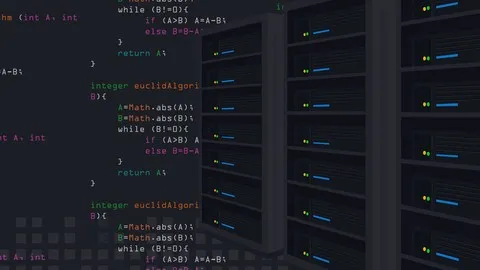
Free Linux Tutorial - Linux Tutorials and Projects (Free) 
This free Linux tutorial provides comprehensive instruction on Linux topics such as Load Balancing, MySQL Replication, and SSL Certificate Management. Gain valuable knowledge and skills with these free tutorials and projects. ▼
ADVERTISEMENT
Course Feature
![]() Cost:
Cost:
Free
![]() Provider:
Provider:
Udemy
![]() Certificate:
Certificate:
No Information
![]() Language:
Language:
English
![]() Start Date:
Start Date:
Self Paced
Course Overview
❗The content presented here is sourced directly from Udemy platform. For comprehensive course details, including enrollment information, simply click on the 'Go to class' link on our website.
Updated in [March 06th, 2023]
This course provides a comprehensive introduction to Linux, from installation to configuration. It covers topics such as installing an SSL certificate on CentOS running Apache, HTTP load balancing with Nginx, and configuring MySQL master-slave replication on Ubuntu Linux. Learners will gain a better understanding of the Linux operating system and how to use it to their advantage.
Possible development paths for learners include becoming a Linux system administrator, a Linux network engineer, or a Linux software developer. Learners can also pursue certifications such as the Linux Professional Institute Certification (LPIC) or the Red Hat Certified Engineer (RHCE).
Learning suggestions for learners include exploring other Linux distributions, such as Ubuntu, Debian, and Fedora. Learners should also consider taking courses in Linux scripting, Linux security, and Linux system administration. Additionally, learners should consider reading books and articles on Linux topics to further their knowledge.
[Applications]
The application of this course can be seen in various areas. It can be used to install an SSL Certificate on CentOS Running Apache, configure MySQL Master-Slave Replication on Ubuntu Linux, and set up HTTP Load Balancing with Nginx. Additionally, the course can be used to gain a better understanding of Linux and its various features. With this knowledge, users can create their own projects and applications using Linux. Furthermore, the course can be used as a reference for troubleshooting and debugging Linux-related issues.
[Career Paths]
1. Linux System Administrator: Linux System Administrators are responsible for managing and maintaining Linux systems, including installation, configuration, security, and troubleshooting. They also monitor system performance and ensure that all systems are running optimally. As the demand for Linux systems continues to grow, so does the need for qualified Linux System Administrators.
2. Linux Network Engineer: Linux Network Engineers are responsible for designing, implementing, and maintaining networks based on Linux systems. They must be knowledgeable in networking protocols, security, and troubleshooting. With the increasing popularity of Linux systems, the demand for Linux Network Engineers is expected to continue to grow.
3. Linux Developer: Linux Developers are responsible for developing applications and software for Linux systems. They must be knowledgeable in programming languages such as C, C++, Java, and Python. As the demand for Linux systems continues to grow, so does the need for qualified Linux Developers.
4. DevOps Engineer: DevOps Engineers are responsible for automating and streamlining the development, testing, and deployment of applications and software. They must be knowledgeable in scripting languages such as Bash, Python, and Ruby. As the demand for DevOps Engineers continues to grow, so does the need for qualified DevOps Engineers with experience in Linux systems.
[Education Paths]
1. Bachelor of Science in Computer Science: This degree path provides students with a comprehensive understanding of computer science fundamentals, such as programming, software engineering, and computer architecture. It also covers topics such as artificial intelligence, machine learning, and data science. This degree is becoming increasingly popular as technology continues to evolve and become more complex.
2. Bachelor of Science in Information Technology: This degree path focuses on the application of technology to solve business problems. It covers topics such as network security, database management, and web development. This degree is becoming increasingly important as businesses rely more heavily on technology to stay competitive.
3. Master of Science in Cybersecurity: This degree path focuses on the security of computer systems and networks. It covers topics such as cryptography, malware analysis, and digital forensics. This degree is becoming increasingly important as cyber threats become more sophisticated and widespread.
4. Master of Science in Data Science: This degree path focuses on the analysis of large datasets to uncover insights and trends. It covers topics such as data mining, machine learning, and predictive analytics. This degree is becoming increasingly popular as businesses look to leverage data to gain a competitive edge.
Pros & Cons

Easy to follow and understand.

Great content and instructor.

Comprehensive explanation of Linux commands.

Includes tips and tricks and projects.

Good experience.

Moves too quickly for some.

No servers to mess around with.

Not suitable for complete beginners.

Limited to Linux specific topics.

No other platforms covered.
Course Provider

Provider Udemy's Stats at AZClass
Discussion and Reviews
0.0 (Based on 0 reviews)
Explore Similar Online Courses

Python Programming Learn Python with 100+ Practicals

Introduction to Japanese Kanji

Python for Informatics: Exploring Information

Social Network Analysis

Introduction to Systematic Review and Meta-Analysis

The Analytics Edge

DCO042 - Python For Informatics

Causal Diagrams: Draw Your Assumptions Before Your Conclusions

Whole genome sequencing of bacterial genomes - tools and applications

Introduction to Linux : Full Course for Beginners

The 50 Most Popular Linux & Terminal Commands - Full Course for Beginners

Linux Fundamentals
 Related Categories
Related Categories
Quiz
 Submitted Sucessfully
Submitted Sucessfully
1. What is the main purpose of this course?
2. What is the first step in this course?
3. What is the last step in this course?


Start your review of Free Linux Tutorial - Linux Tutorials and Projects (Free)